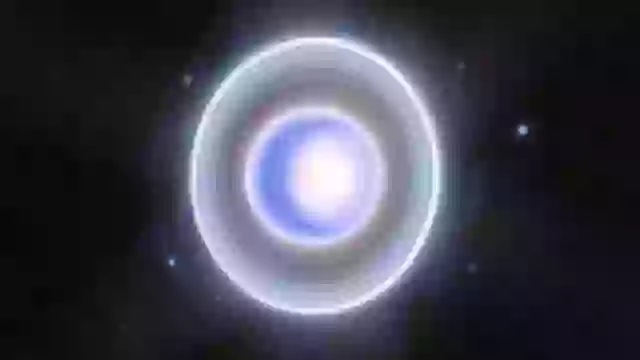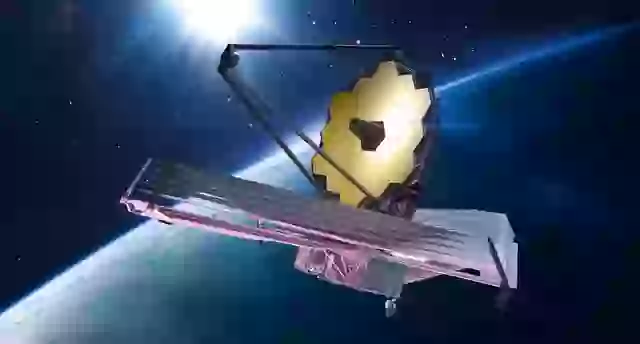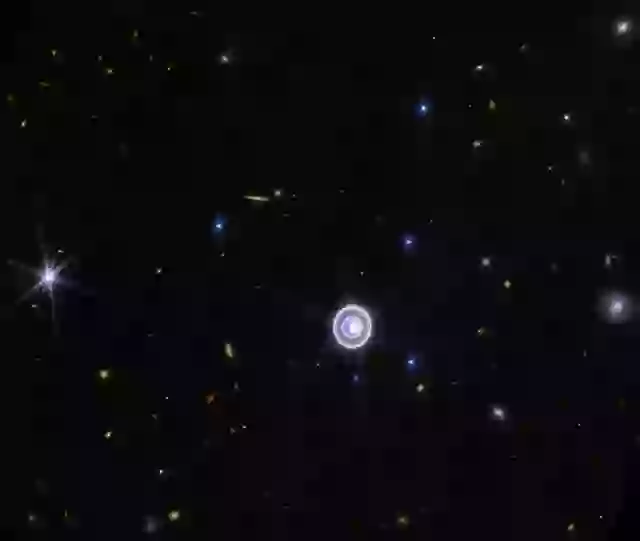
Posted on 05/28/2025 9:28:01 AM PDT by Red Badger

Over the decades, NASA has managed to capture a number of astonishing photos from space, showcasing how beautiful the cosmos really is.
Take these unique details on Saturn’s moon Iapetus as the perfect example.
Or how about an eerie snapshot taken by the so-called ‘most isolated man in the universe?’
These photos have a way of pulling you in and honestly, I could scroll through them for hours on end.
I'm not alone; one social media user has re-shared two stunning photos of Uranus captured by NASA which have since gone viral.
The US agency launched its James Webb Space Telescope (JWST) on December 25 2021, and it's given us a whole new perspective on our galaxy.
These snaps of Uranus from September 2023 have proven not many of us know what it actually looks like...
Ok, now that you've finished giggling - one Reddit user, aptly named PrinceofUranus0, took to the site's R/SpacePorn community to share the awe-inspiring pictures.

A wide-field image shows the bright blue planet against the black of space, amid a smattering of distant background galaxies.
Some 14 of its 28 moons are visible, while Uranus itself shines, thanks to its 13 outer rings.
The second photo, a close-up of the planet - which is four times wider than Earth - shows its dim inner and outer rings in greater clarity, including the elusive Zeta ring - the 'extremely faint and diffuse ring closest to the planet,' as NASA explains.

Uranus and 14 of its 28 moons (NASA)
=================================================================================
It truly is breathtaking - and Reddit users are in agreement.
One person commented: "I will never not be amazed seeing these. JWST can’t help but picture galaxies everywhere," as a second agreed: "This is insane. The mix of stars from our own galaxy with deep space galaxies off in the distance and Uranus popping in the middle."
A third admitted: "Both shots are mind blowing. I had zero clue this is what Uranus looked like. I'm still having trouble processing that this is a real picture."
A fourth penned: "That’s the best picture of Uranus I’ve ever seen! Such a gorgeous planet."
The planet appeared simply as a 'placid, solid blue ball' when picked up by Voyager 2's visible wavelengths in the 1980s.
But JWST's infrared wavelengths reveal a 'strange and dynamic ice world filled by exciting atmospheric features,' NASA says.
For example, the planet is seen with a north polar cloud cap in these JWST pictures, while several bright storms can also be seen near and below the southern border of the polar cap.
NASA says the polar cap appears to become more prominent when the planet’s pole begins to point toward the Sun, as it approaches solstice and receives more sunlight.
Uranus reaches its next solstice in 2028, and astronomers are eager to catch any changes in the structure of these fascinating details.
The more you know!
Featured Image Credit: NASA
Unless it’s General Chang’s bird of prey.
😳
Right. Because urine-iss is still gross, just not funny-gross. Then again, the planet is actually composed of urine.
An astronomer, pious but odd
(To be honest, a dirty old clod),
Who’d searched for a sign
Of a presence divine,
Cried, “I’ve just found Uranus, dear God!”
NASA does not use traditional artists to manually paint or color the Hubble Space Telescope images. Instead, highly trained imaging specialists and scientists process the raw, black-and-white data from Hubble using computer software.
Hubble captures images in grayscale through different filters, each corresponding to specific wavelengths of light (including visible, ultraviolet, and infrared). These images are then combined and color is digitally assigned to represent the data from each filter.
Sometimes, colors are chosen to approximate what the human eye would see, but often, especially for wavelengths invisible to us, colors are assigned to highlight scientific features—a process known as “false color” or “representative color”.
This work is described as “equal parts art and science,” but it is performed by imaging experts and astronomers, not by traditional artists. The goal is to reveal scientific information and make the images accessible and informative, not to create fantasy or purely aesthetic artwork.
I knew a guy that had “your name” tattooed on his ass. He won a lot of bets and got into a few fights as well
I always thought the rings were brown?
And you have not landed on the surface of Uranus.
The sunlit surface of the moon right next the camera is very bright by comparison, and does require a very narror aperture.
I've looked at an outer planet (Saturn) through a telescope before. Even with a fairly large scope, it's fairly dim, and your eyes need to dark-adapt to see it clearly. Compare something that faint to something brighter than sunshine on a bright concrete pavement on earth.
Pretty blurry for Uranas I would think...
Not as clear as I expected.
Be thankful.................
I think his great grandson was Bickuth Dickuth
Here we go. It’s been awhile since we’ve seen something shedding light on Uranus. I think Musk should just skip Mars and send his huge rocket right to the surface of Uranus.
I’m only here for the jokes
Disclaimer: Opinions posted on Free Republic are those of the individual posters and do not necessarily represent the opinion of Free Republic or its management. All materials posted herein are protected by copyright law and the exemption for fair use of copyrighted works.